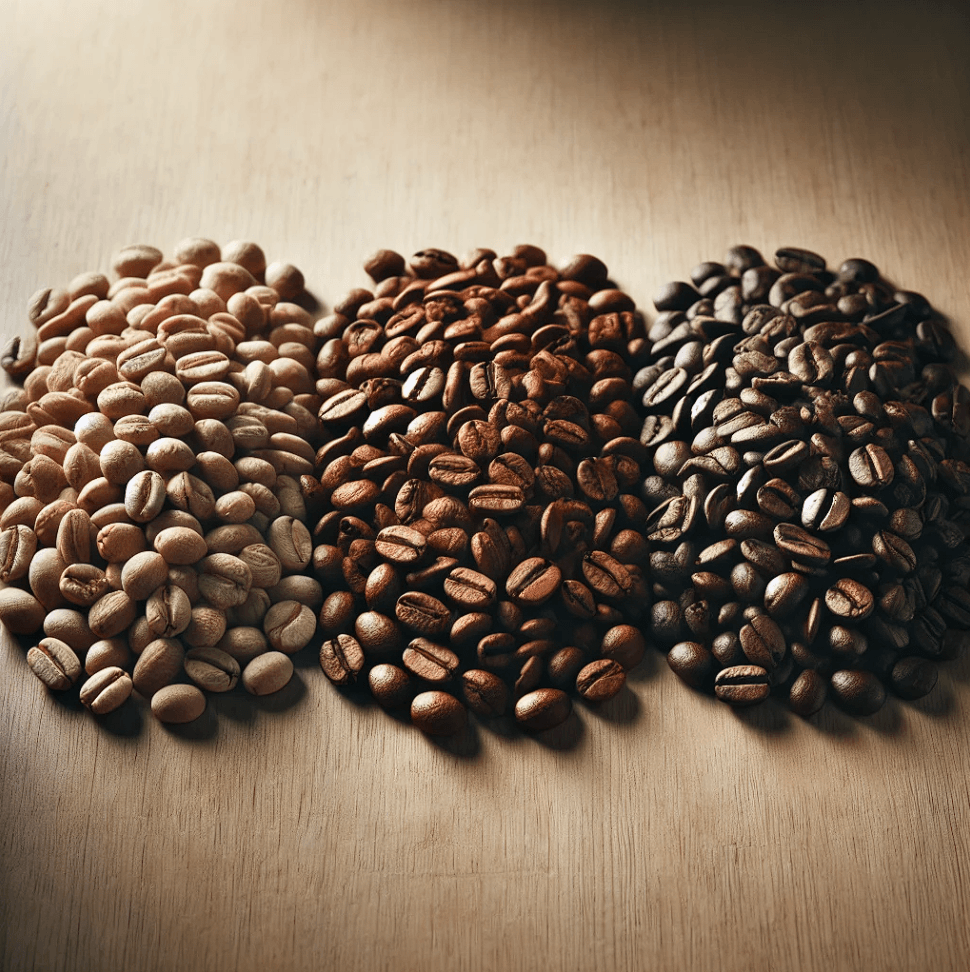A Guide to Light, Medium, and Dark Roasts: Exploring Flavor, Caffeine, and Bean Mass

When it comes to coffee, the roast level plays a significant role in shaping its flavor, aroma, and overall character. Whether you prefer a light, medium, or dark roast, understanding the differences between these roast levels can help you make more informed choices and appreciate your coffee even more. Let’s break down the facts about each roast level and debunk some common myths about caffeine content and bean mass.
Light Roasts
Light roasts are often celebrated for their bright, nuanced flavors. Because the beans are roasted for a shorter period at lower temperatures (typically between 356°F and 401°F), they retain more of their natural characteristics, including floral, fruity, and acidic notes. Light roasts are sometimes referred to as “City Roast” or “Cinnamon Roast.”
-
Appearance: Light brown, dry surface (no visible oils).
-
Flavor Profile: Delicate and complex, often showcasing the origin of the beans.
-
Caffeine Content: Contrary to popular belief, light roasts do not have significantly more caffeine than darker roasts. The difference in caffeine is negligible by weight, though light roasts may contain slightly more caffeine per gram because they are less dense than darker roasts.
Medium Roasts
Medium roasts strike a balance between the acidity of light roasts and the boldness of dark roasts. Roasted at temperatures between 410°F and 428°F, these beans develop a richer, more balanced flavor while retaining some of their origin characteristics.
-
Appearance: Medium brown, still dry but slightly darker than light roasts.
-
Flavor Profile: Well-rounded with moderate acidity, sweetness, and body.
-
Caffeine Content: Similar to light roasts by weight. Since the roasting process hasn’t significantly reduced the bean mass yet, medium roasts also maintain a comparable caffeine level per gram.
Dark Roasts
Dark roasts are roasted at higher temperatures (typically above 440°F), giving them their bold, smoky, and sometimes bitter flavor profile. These roasts are also known as “French Roast” or “Espresso Roast” and often have visible oils on their surface.
-
Appearance: Dark brown to almost black with an oily sheen.
-
Flavor Profile: Heavy-bodied with prominent roasted notes, often described as smoky, chocolaty, or caramel-like.
-
Caffeine Content: While dark roasts have a reputation for being “stronger,” this refers more to their bold flavor than their caffeine content. The roasting process reduces bean mass and density slightly, so dark roasts have marginally less caffeine by weight compared to light or medium roasts. However, if measured by volume (e.g., a scoop of coffee), the lighter roast will yield slightly more caffeine.
The Role of Bean Mass and Caffeine Content
One of the most misunderstood aspects of coffee is how caffeine content is affected by roast levels. The key factor is not the roast itself but the changes in bean mass and density during the roasting process:
-
Bean Mass: As beans roast, they lose water content and undergo chemical changes, reducing their mass. Light roasts retain more mass compared to medium or dark roasts, making them denser.
-
Caffeine Stability: Caffeine is a stable compound and does not degrade significantly during roasting. Therefore, the caffeine content remains relatively consistent by weight, regardless of roast level.
-
Measurement Matters: When using a scale to measure coffee (by weight), caffeine levels across roast levels are almost identical. However, if measuring by volume (e.g., using a scoop), lighter roasts—being denser—will contain more caffeine per scoop compared to darker roasts.
Choosing the Right Roast for You
-
If you love delicate, nuanced flavors: Go for a light roast to experience the full expression of the coffee’s origin.
-
If you prefer balance and versatility: A medium roast offers a harmonious blend of flavors, suitable for most brewing methods.
-
If you crave bold, robust flavors: A dark roast will provide a rich, smoky cup that pairs well with milk or cream.
Conclusion
Understanding the science and art behind light, medium, and dark roasts allows coffee enthusiasts to make informed choices that suit their taste preferences and brewing methods. While roast level influences flavor and bean mass, the caffeine content remains largely stable by weight across the spectrum. So, whether you’re sipping on a bright light roast or a bold dark roast, you can enjoy your coffee knowing the facts behind every cup.





